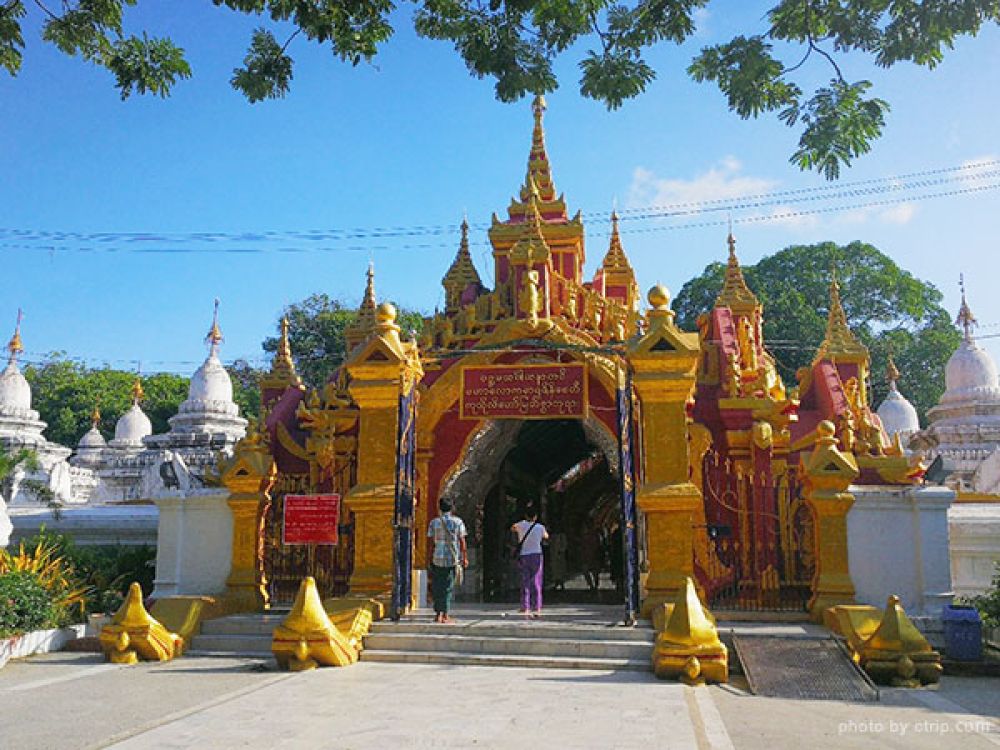

Located at the base of Mandalay Hill in Myanmar, Kuthodaw Pagoda stands as a monument to both Burmese culture and the remarkable history of Buddhism in the country. The pagoda complex is famously home to the world's largest book, a collection of 729 marble slabs inscribed with the entire Pali Canon of Theravada Buddhism.
Built during the reign of King Mindon in the late 19th century, the Kuthodaw Pagoda was designed to preserve the sacred texts of Buddhism in a durable form. The king's intention was to create a tangible source of Buddhist teachings that could withstand the trials of time and offer guidance for future generations. Each of the 729 slabs, housed in its own stupa around the main golden pagoda, represents a page from the Tripitaka, the traditional scriptures of Theravada Buddhism.
Tourism at Kuthodaw Pagoda began to flourish, especially after Myanmar started opening its doors to international visitors in the late 20th century. The site became a UNESCO World Heritage Site as part of the Mandalay Cultural Area in 2019, which boosted its prominence as a must-visit destination for cultural and heritage tourism. Visitors are drawn not only to the religious significance of the "World's Largest Book" but also to the intricate architecture and stunning white stupas that create a serene and photographable landscape.
When touring the complex, visitors experience a combination of spiritual ambiance and awe for the sheer expanse of the written word carved into stone. Many come to marvel at the diligence of the ancient carvers who undertook the monumental task of inscribing the texts, a process that took eight years to complete.
In the latest tourism trends, Kuthodaw Pagoda has seen a surge in conscious tourism, with travelers seeking to understand the historical and religious context of their visits. There is an increasing inclination towards hiring local guides, who provide in-depth knowledge of the pagoda's history and the significance of each marble slab. Mindful tourism practices, such as paying respect to local customs and dressing modestly, are strongly encouraged.
Moreover, due to global digitalization, virtual tours and online information sources have become significant, allowing potential visitors to explore the Kuthodaw Pagoda remotely before experiencing it in person. The focus on sustainable tourism also reflects tourists' growing desire to visit the site outside of peak hours to avoid overcrowding and minimize impact on the sacred grounds.
The history and allure of Kuthodaw Pagoda continue to thrive as the site adapts to modern tourism trends while preserving the tranquility and sanctity of the "World's Largest Book." As Myanmar's tourism industry evolves, Kuthodaw Pagoda remains a symbolic nexus where the past meets the present, offering a unique glimpse into the spiritual heart of Burmese Buddhism.